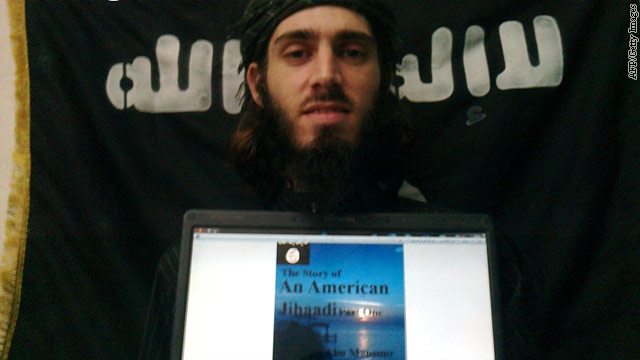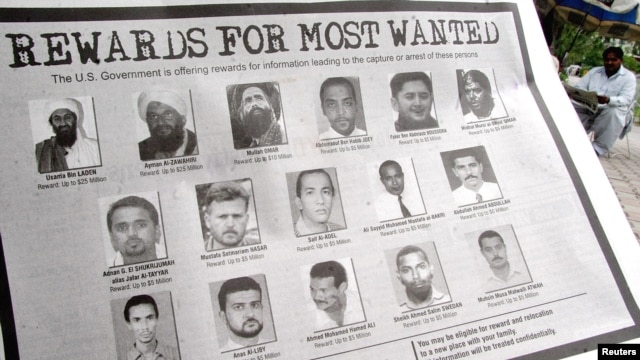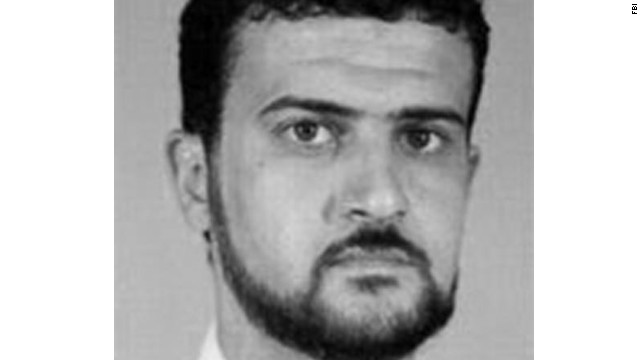The Federal Bureau of Investigation's list of "Ten Most Wanted" fugitives dates back to 1950 but the list of "Most Wanted Terrorists" dates back to just after 9/11 and a sense that terrorism had become a strategic threat. Today, the list includes 31 individuals, all of them male and with a single exception (Daniel Andreas San Diego, an animal rights extremist), all of them Muslim:
•Abd al Aziz Awda – 1950, Palestinian, Palestinian Islamic Jihad
•Abdelkarim Hussein Mohamed Al-Nasser – ca. 1947, Saudi, Saudi Hizbullah
•Abdul Rahman Yasin – 1960, American, World Trade Center bombing in 1993
•Abdullah Ahmed Abdullah – 1963, Egyptian, Kenya and Tanzania embassy bombings in 1998
•Adam Yahiye Gadahn – 1978, American, Al-Qaeda
•Adnan G. El Shukrijumah – 1975, Guyanese, Al-Qaeda
•Ahmad Ibrahim Al-Mughassil – 1967, Saudi, Saudi Hizbullah
•Ali Atwa – ca. 1960, Lebanese, TWA hijacking in 1985
•Ali Saed Bin Ali El-Hoorie – 1965, Saudi, Saudi Hizbullah
•Anas Al-Liby – 1964, Libyan, Kenya and Tanzania embassy bombings in 1998
•Ayman Al-Zawahiri – 1951, Egyptian, Al-Qaeda
•Faouzi Mohamad Ayoub – 1966, Lebanese, Lebanese Hizbullah
•Hakimullah Mehsud – ca. 1980, Pakistani, Pakistani Taliban
•Hasan Izz-Al-Din – 1963, Lebanese, TWA hijacking in 1985
•Husayn Muhammad Al-Umari – 1936, Lebanese, 15 May Organization
•Ibrahim Salih Mohammed Al-Yacoub – 1966, Saudi, Saudi Hizbullah
•Isnilon Totoni Hapilon – 1966, Filipino, Abu Sayyaf Group
•Jaber A. Elbaneh – 1966, Yemeni, Al-Qaeda
•Jamal Saeed Abdul Rahim – 1965, Palestinian, Pan Am hijacking in 1986
•Jamel Ahmed Mohammed Ali Al-Badawi – 1960, Yemeni, USS Cole bombing in 2000
•Jehad Serwan Mostafa – 1981, American, Al-Shabaab
•Mohammed Ali Hamadei – 1964, Lebanese, Lebanese Hizbullah
•Muhammad Abdullah Khalil Hussain Ar-Rahayyal – 1965, Palestinian, Pan Am hijacking in 1986
•Muhammad Ahmed Al-Munawar – 1965, Palestinian, Abu Nidal Organization
•Omar Shafik Hammami – 1984, American, Al-Shabaab
•Raddulan Sahiron – ca. 1936, Filipino, Abu Sayyaf Group
•Ramadan Abdullah Mohammad Shallah – 1958, Palestinian, Palestinian Islamic Jihad
•Saif Al-Adel – ca. 1960, Egyptian, Al-Qaeda
•Wadoud Muhammad Hafiz Al-Turki – 1955, Palestinian, Pan Am hijacking in 1986
•Zulkifli Abdhir – 1966, Malaysian, Kumpulun Mujahidin Malaysia
(1) Muslims make up 30 out of 31 most wanted terrorists, or about 97 percent of them. That's a pretty good indication of what Bernard Lewis' 1990 article famously called "Muslim rage" and why Islam-related issues have such prominence.
Lessons from the FBI's Most Wanted Terrorist List :: Daniel Pipes







